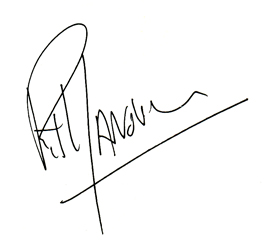Foreword
The 'phone rang, jetlagged from an 18 hour flight, I picked it up.
"John Ackroyd here, I wrote to you four weeks ago applying for the job of "Thrust 2" Designer - and I haven't heard anything."
I explained that I had had 70 replies and that my employers had inconsiderately chosen that moment to ship me off to the Far East. We met the next day - and all I could show John was the Avon engine in my garage and an empty bank account. John being John, wanted to start work immediately - but first I wanted him to meet Ken Norris, designer of "Bluebird". Next day, I rang Ken for an appointment for John. "He's been here since 9 a.m." said Ken with a chuckle ...
Designing a Land Speed Record Car is not something to be undertaken lightly by a responsible citizen with a conscience and any imagination. In your heart you all know that when the chips are down the car will be driven to its ultimate, with little regard for niceties like safety factors. John Watkins knew this when we questioned him about how long the engine could be expected to withstand the appalling treatment we were giving it - "Put your foot down and think of England," he said. The designer also knows that the car will probably be driven in less than ideal conditions, with modifications being made on site, and it could turn out to be a killer.
Most important is the designer's logic processes. Thinking time is cheap; making alterations in metal is expensive; making radical changes on site during a Record Attempt is horrendously costly in money, but even more costly in terms of wasting the short good weather windows we were given. As you will see from this book, John thought everything out beforehand, and I mean everything. Question him with some way-out bright idea you have just tumbled to, and he will have it closely argued on a page in one of his loose leaf files with the vital points emphasized with ruler straight underlinings.
In cash terms the "Thrust 2" programme cost £1,005,000 and there was never any room in that tiny budget to radically alter the design, or build another car - though we got perilously close to that when I crashed "Thrust 2" in 1982.
When we started "Thrust 2", John was the sole full-time team member, working from the kitchen of a derelict house rented at £5 per week. He had to walk a round trip of half a mile to the telephone box and to hoard his coins carefully. There must have been times when he wondered if he was throwing his time away on a useless enterprise. Yet during this period he closely argued and froze the "Thrust 2" design without the benefit of transonic wind tunnel testing (which we could only afford later), and he got it absolutely right.
When "Thrust 2" appeared finished in public for the first time, the critics were ready too:-
"It's too wide."
"Crossectional Area is too great for transonic performance - didn't they learn anything from Blue Flame?"
"Too heavy - what's needed is a light jet car, not a monster."
"Jets are out, should be a rocket. . . "
"Intake design is all wrong - should have a centrebody.
In fact, they were the ones who hadn't thought it out properly, as we were happy to prove
later.
By realising that success depended on the critical relationship between safety, operational reliability and outright performance, John came up with a car which could be safely and regularly run to its maximum speed. Too often in the past cars which sacrificed everything to performance turned out to be either so unreliable or downright dangerous that they never reached their design speed. "Thrust 2" exceeded its design speed by 0.88 mph.
Unhappily, there is as yet no Indoor Land Speed Record, so we have to contend with the weather, which will decide the outcome of your attempt. We lost to the weather twice (1981 and '82), but during the attempts "Thrust 2" ran over 600 mph 11 times which is more than any other LSR Car. Whilst seeking to reduce the time taken to turn around "Thrust 2" during the vital 60 minutes between runs, the crew seriously suggested dropping the inspection of the front wheels for the simple reason that we had never found any problems. Such was the legendary reliability of "Thrust 2".
Sadly, probably due to past precedent, the designer never seems to get his fair share of credit for the venture, the publicity being heaped on the man in the driving seat. John certainly hasn't got the recognition he deserves for his outstanding achievement, for without him Britain would never have regained the World's Land Speed Record. Read this book and you will see why.

Richard Noble
Twickenham, Middlesex. February 5th, 1984



